- Bhutan Motorcycle Tour - December 9, 2025
- Lone Rider - November 18, 2025
- Rev’it Contrast GTX Gloves review - August 18, 2025
I have written a number of articles previously about my experiments using various cameras for taking photos whilst riding. After a period away from 360 cameras I return to fool around with the Ricoh Theta X.
Before talking about the Theta X a bit of a recap is in order. I like to stop and take well composed off bike photos primarily when on tour but there are locations where I want to capture an image on bike or where it is impossible to stop.
I tried a number of action cams but found these devices were video centric. They default to taking video when turned on and it is difficult while riding to switch them to photo mode. Most riders now shoot video but I am not interested in the boring ‘road ahead’ POV videos consist of nor do I want the frame grabs from that video which I see riders posting to Facebook. The image quality is woeful.
I tried a few ‘lens only cameras’, models mostly only sold in Japan but available cheap 2nd hand. A Sony that was nice but not wide enough lens, an Olympus Air Micro 4/3 with a 18mm lens but inadequate IBIS and the Casio FR-100 which I still have. When I got the shot framed right with lighting ok these gave me decent quality images however you have little indication what you are pointing them at and motion, sun flare and shadows also ruin many shots thus the success rate is extremely low, maybe 1 in 50 which means many locations you pass and end up with zero useable photos.
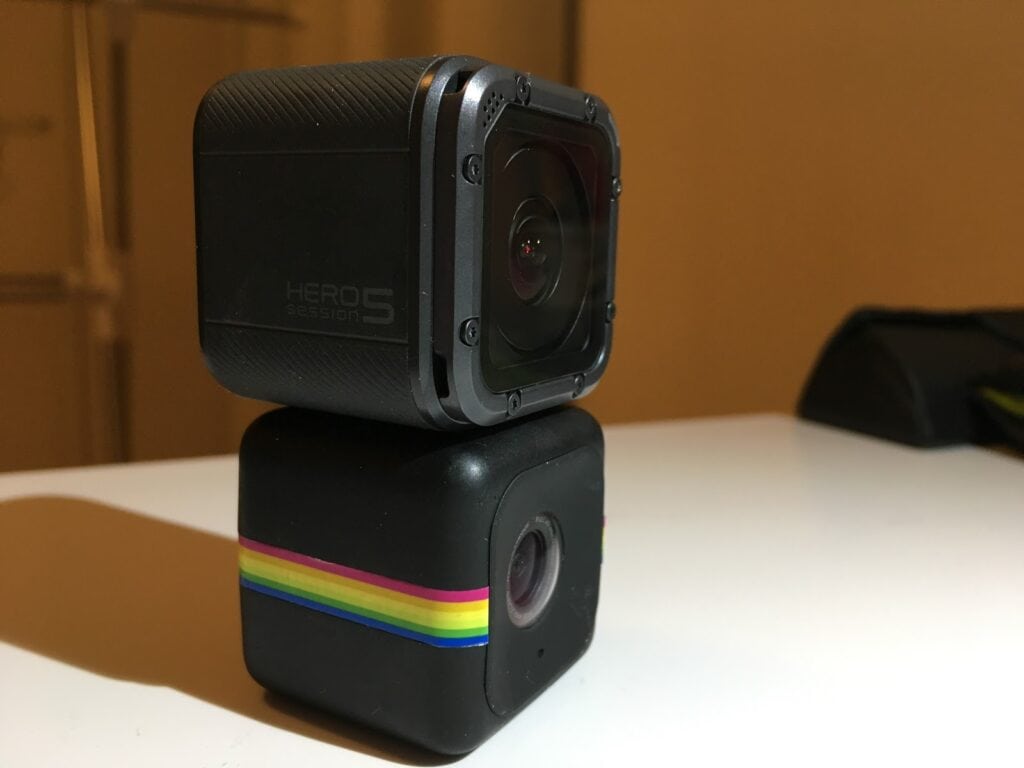
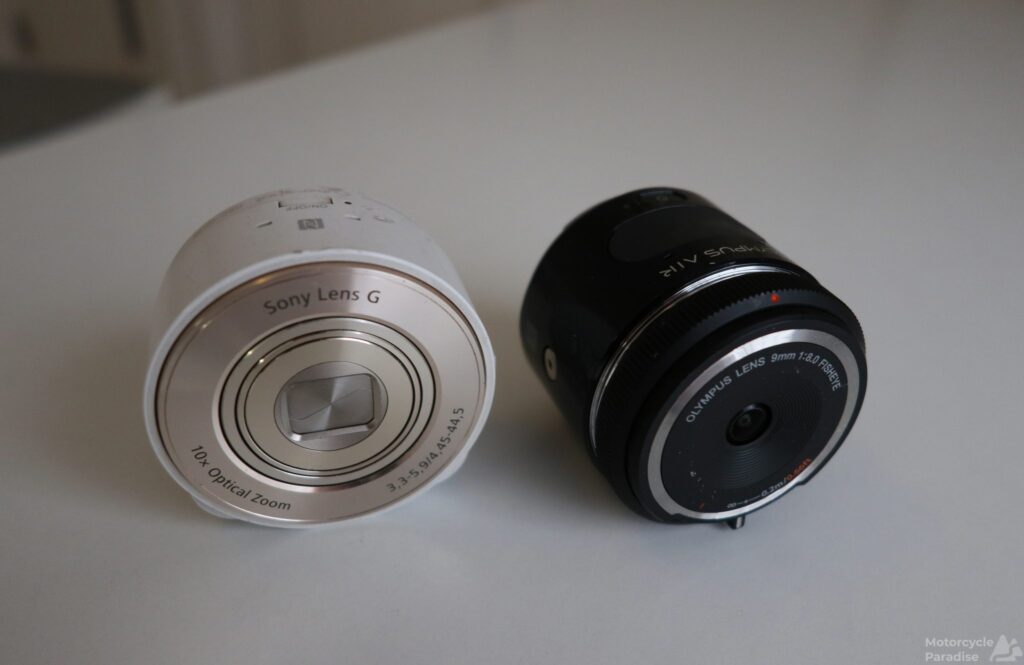
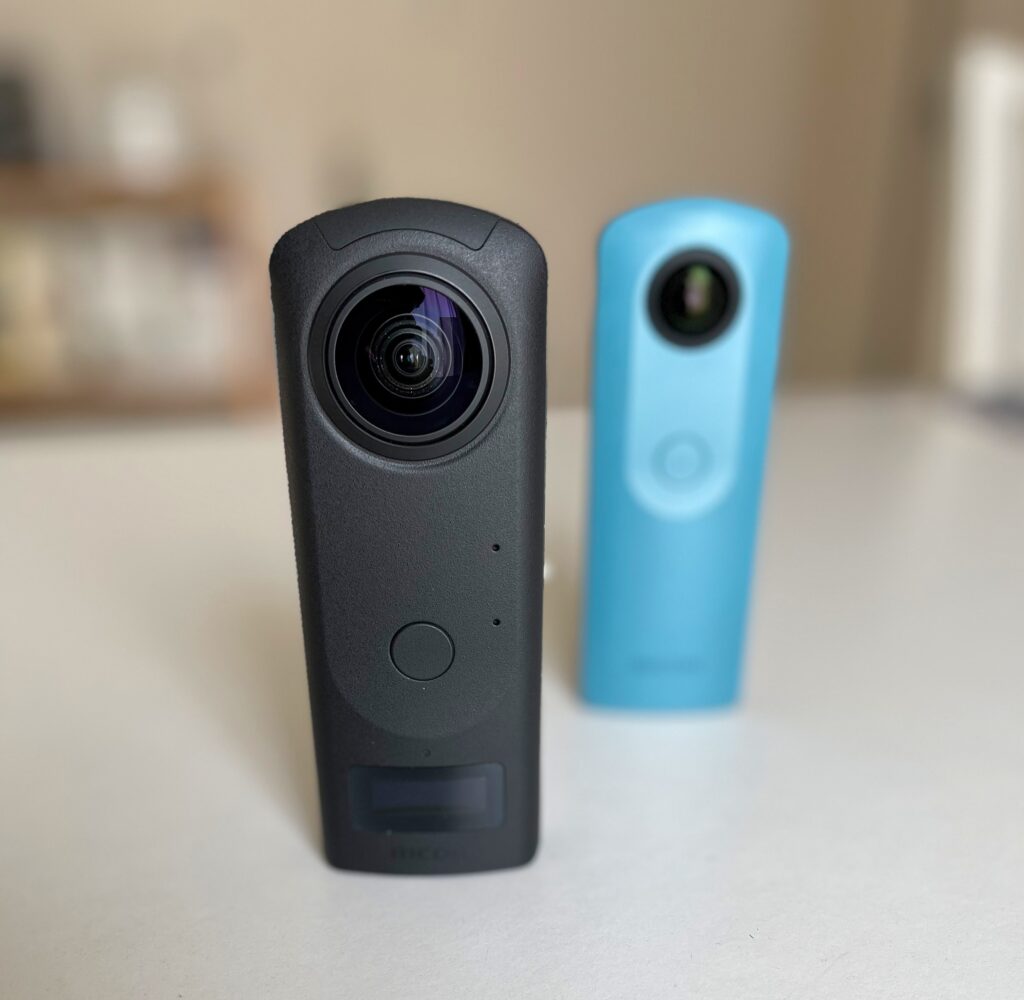
In between those lens only cameras I was also experimenting with 360 cameras. The great thing about these devices is you just hold the camera anywhere and everything full circle is captured then in post production you can rotate and reframe the shot. First I had the Theta SC which was only 4K not nearly enough for 360 degrees and later the Theta Z1 which was 7K and had 1 inch sensors which should have been good but I found it inconsistent and it’s stitching rarely aligned. I also had a Qoocam 8K which was a useless beta product I returned for refund.
Ricoh released the Theta X some time ago but given how expensive these cameras are I elected to keep using my Casio FR-100 lens only camera. Then on my Pakistan ride I took 150+ onboard photos of the amazing scenery but so few were useable so I decided time for a change. By luck I won $500 credit in a competition so used that to lower the purchase price of a Theta X. I did consider the Insta 360 One inch sensor camera but it is lower resolution and video centric.
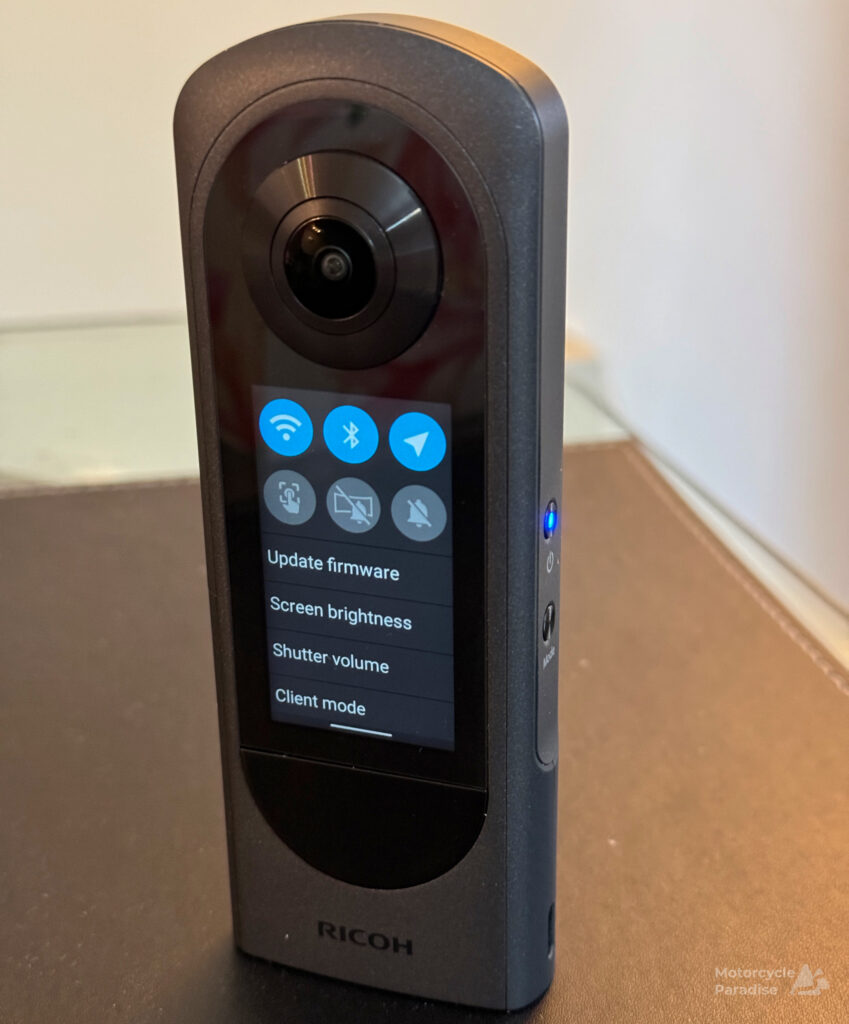
The Theta X captures 11K 60MP still images which are far higher resolution than my previous 360 cameras. However it only has small sensors. If that sounds like 1 step forward 1 step back then you would be correct.
It has a small screen as you can see above which is really of little use for framing because everything 360 is already going to be in frame however not needing to connect to the smartphone app to change settings is very handy compared to previous models.

The Theta Z1 could shoot raw (DNG) which along with bigger sensors allowed for recovery of highlights and shadows however the files needed to be converted to TIFF for editing otherwise I found them incompatible. Often the Z1 images were soft or the stitch line ruined where I wanted to frame my crop. I was using Topaz Ai to sharpen but rarely it worked as well as it did in the above photo.
The Theta X does not support raw files which is a real shame (latest firmware is adding raw support but only for tripod HDR shots so far). However it delivers high resolution image SOOC which is fairly sharp. Stitching is pixel perfect every photo so far and metering is matched for both sensors which was lacking on the Z1, which a sharp eye will have noticed in the above photo.
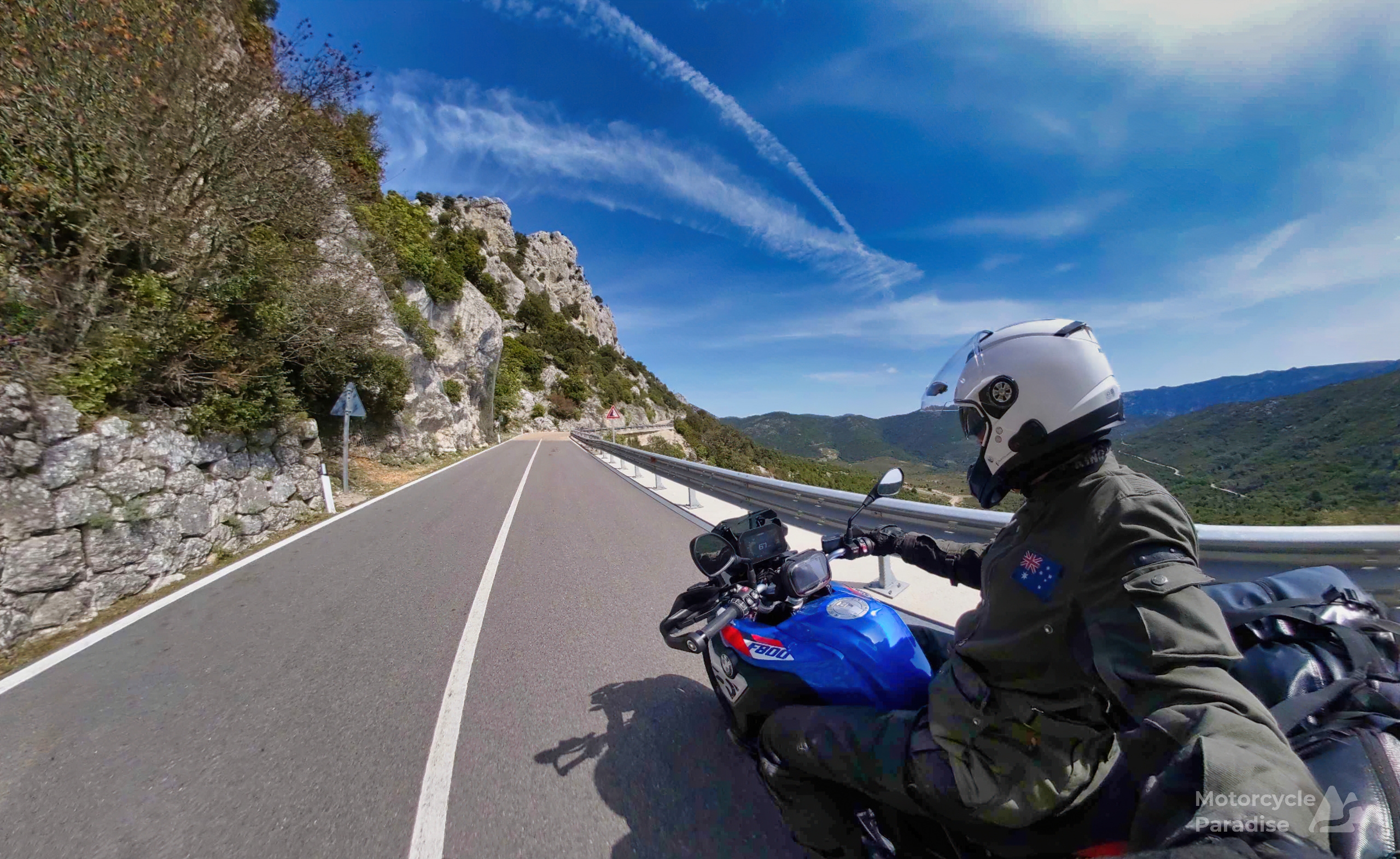
The X blows out highlights and some shadows are unrecoverable also. It struggles in low light. I took some photos in tunnels and it did not like that much but some of the problem was a modest ISO ceiling which I have now bumped up from default.
So far I think the Theta X does a reasonable job in daylight. From 11K 360 image my crop is about 4K then posting to this WordPress blog photos are now limited to 2K (and you are then viewing in lower resolution again unless you click on them).
Japanese camera makers have always had this thing where they focus more on hardware and less on software. The Theta Z1 was held back by it’s software and Ricoh could have done more with the X’s software. The old Theta SC had an enhanced dynamic range mode and took decent photos in tunnels. The Z1 had raw support. Ricoh removed both these features from their latest model for no reason.
On a positive note using the Theta X occasionally on my recent Sardinia and Portugal/Spain ride I had no trouble to get useable shots. Almost every photo could be reframed to something that I consider usable and I ended up with heaps of photos to choose from.
Working in Jpeg only means less recovery but much easier post processing as I can drag and drop files to the Theta app to pan and zoom then crop and moved new files to Luminar for easy editing without any further conversion.
The super wide angle flattens landscapes like GoPro’s but I also stop and take regular photos so the flattened images will only ever be a small part of what I post to the blog rather than a ride video where you are stuck looking at that the entire time.
The Theta X can be operated by a remote control so I have sourced one of these and in future rides will experiment further with how I can take photos with it while riding possibly using my mini Quik Pod. There is a Japanese rider I follow on Instagram who takes superb onboard photos with his camera placed more rearward than I can hold with my hand so that is something I want to explore and I have a few other ideas for new ways to use the Theta X also.
I’m pleased Ricoh’s 360 cameras retain a focus on still photography but the Theta X is not everything I hoped the camera might be. Still it’s possibly the best for my purpose until Ricoh combine the features of the Z1 and the X. More resolution Vs more dynamic range is a tough choice but for me sharpness wins. I think the X with it’s high resolution straight out of camera will deliver more useable photos but time will tell.
Update 2025.
Well the Theta X has not delivered the results I was hoping for. It has the specs to do more but the firmware is weak. That seems a common thing with Japanese products that I have talked about before. The Japanese are often focused on specs and less on software.
On recent rides the Theta X struggles to take photos in tunnels which is sad because my original Theta SC with so low specs could be relied on to nail tunnel photos every time which I used to post often back when I owned that cam.
Bright sunlight then the X should be fine but it blows highlights as much as the SC did despite have far better sensors and should be far better.
The Z1 could handle highlights but it lacked the resolution needed and in hindsight I wish I had kept it as my success rate was better with it. My success rate with the X is so low I am probably going to sell it in future and switch to an action cam.



